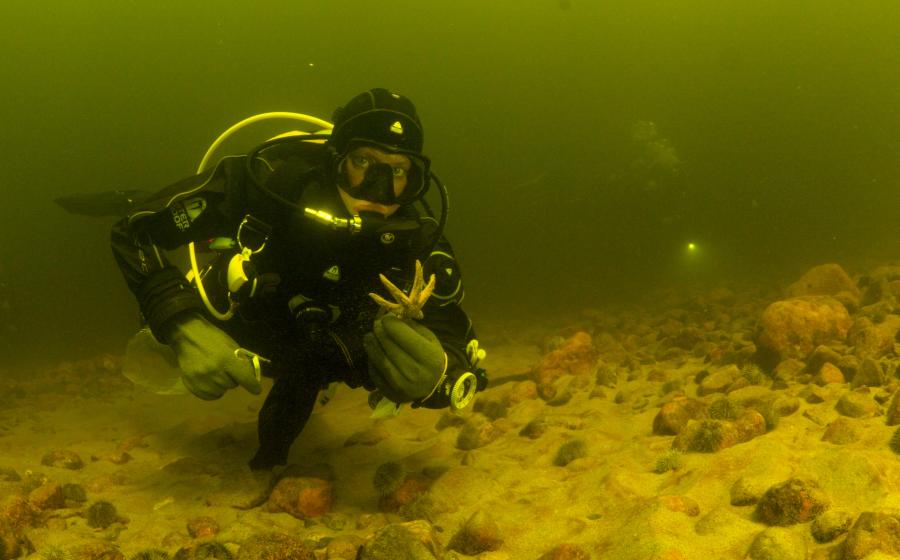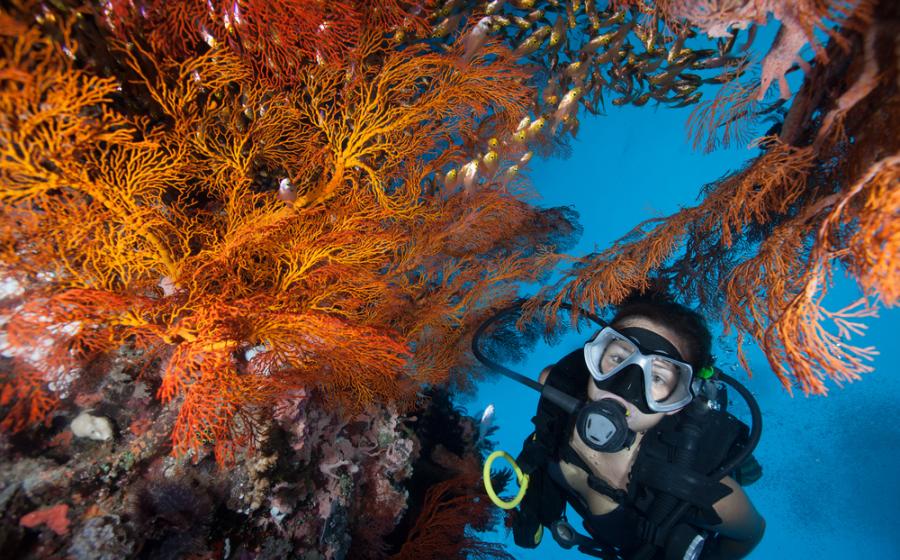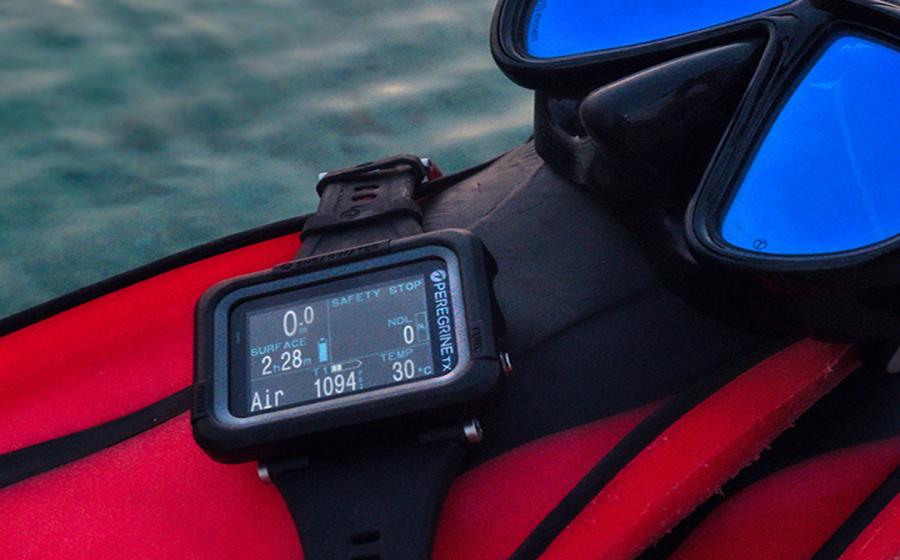Classic Bermuda: A Dive Vacation Guide
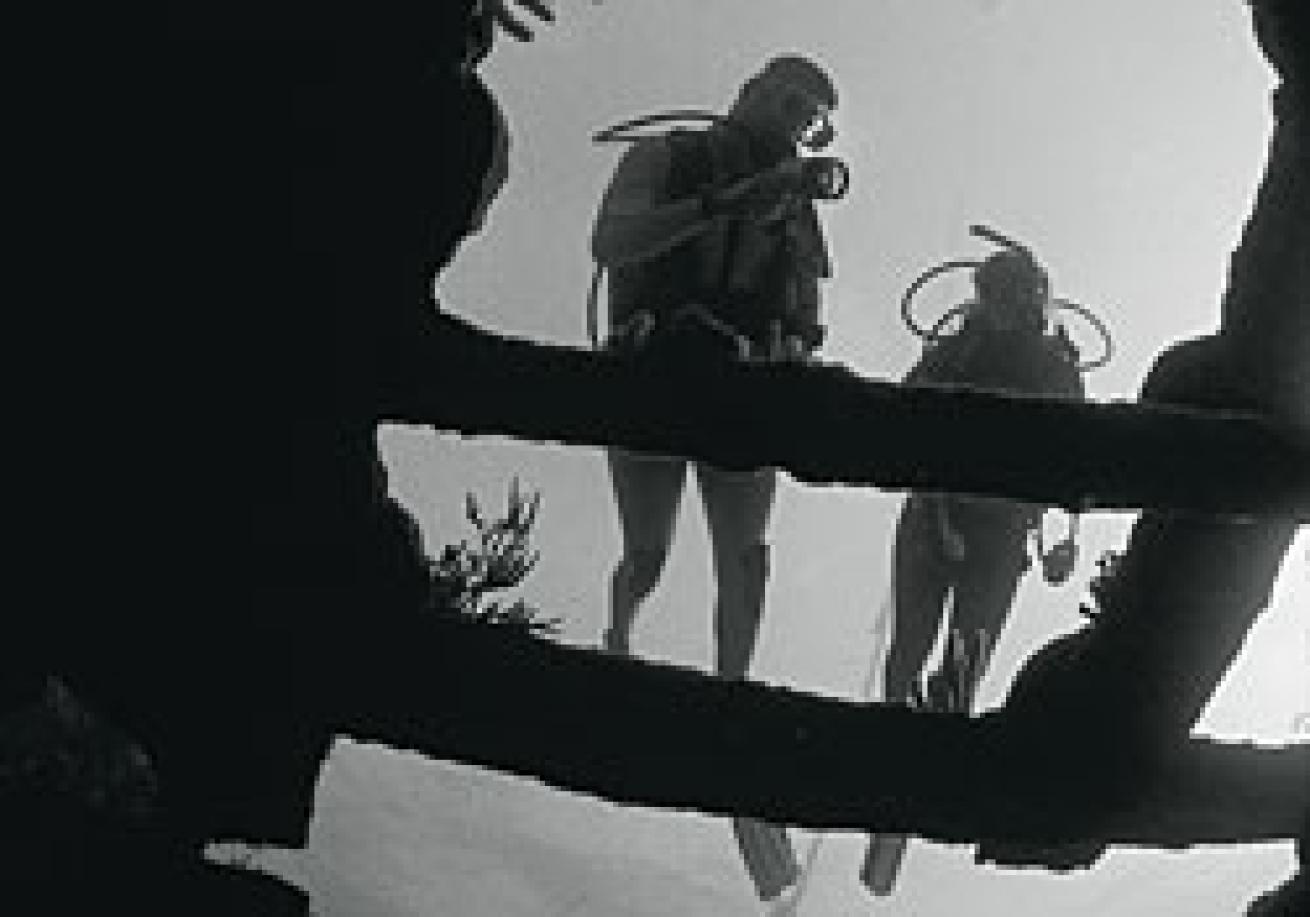
Every great dive destination has a signature — something that makes it unique, setting it off from all the other places with turquoise water and pretty fish.
Cozumel? Walls, drift diving, cheap prices. Galapagos? Sharks, evolution, more sharks. Australia? The Great Barrier Reef.
And Bermuda? What special pleasures does it hold for the discriminating dive traveler? These three signature features:
Bermuda Signature No. 1
The greatest collection of diveable shipwrecks in this hemisphere.
There are more than 400 documented shipwrecks lying stranded on Bermuda's broad and treacherous reefs, which extend from shore to several miles out to sea. No one knows the exact number of wrecked vessels still to be found and identified, but it's thought to be in the thousands.
The result: You can dive 500 years of maritime history on a four-day dive package, from Spanish galleons of the 16th century to turn-of-the-century luxury liners, and Chinese freighters sunk intentionally in the '90s. In between are Civil War blockade runners (Bermudians were paid enough to side with the Confederates), a World War II schooner loaded with ampules of morphine, late treasure hunter Mel Fisher's tugboat — and virtually every type of vessel that's ever sailed the bounding main, from British brigantines to French frigates. If you're into wrecks, you're in heaven.
Bermuda Signature No. 2
The Atlantic's best visibility.
This is the only destination we know of whose claim of "great viz!" is backed up by a scientific study. A survey of water clarity in the Western Atlantic puts data behind what the photos tell you: the underwater viz in Bermuda is often stunning, 200 to 300 feet at its best, courtesy of the north-flowing Gulf Stream. Choose the best month, catch the right tide and you'll enjoy water clarity that's like an ocean martini.
Bermuda Signature No. 3
Access and access.
Especially if you live anywhere near the East Coast of the U.S., where you'll find nonstop service for the short hop from Boston, New York, D.C., Atlanta and elsewhere. Sit back for the in-flight movie. When the credits roll, you'll be straightening your seat back and tray table into their full, upright and locked position.
But the access extends under water, too. Some of Bermuda's best wrecks can be done as shore dives. The rest are rarely more than a gear-setup and wetsuit-don away from the dock.
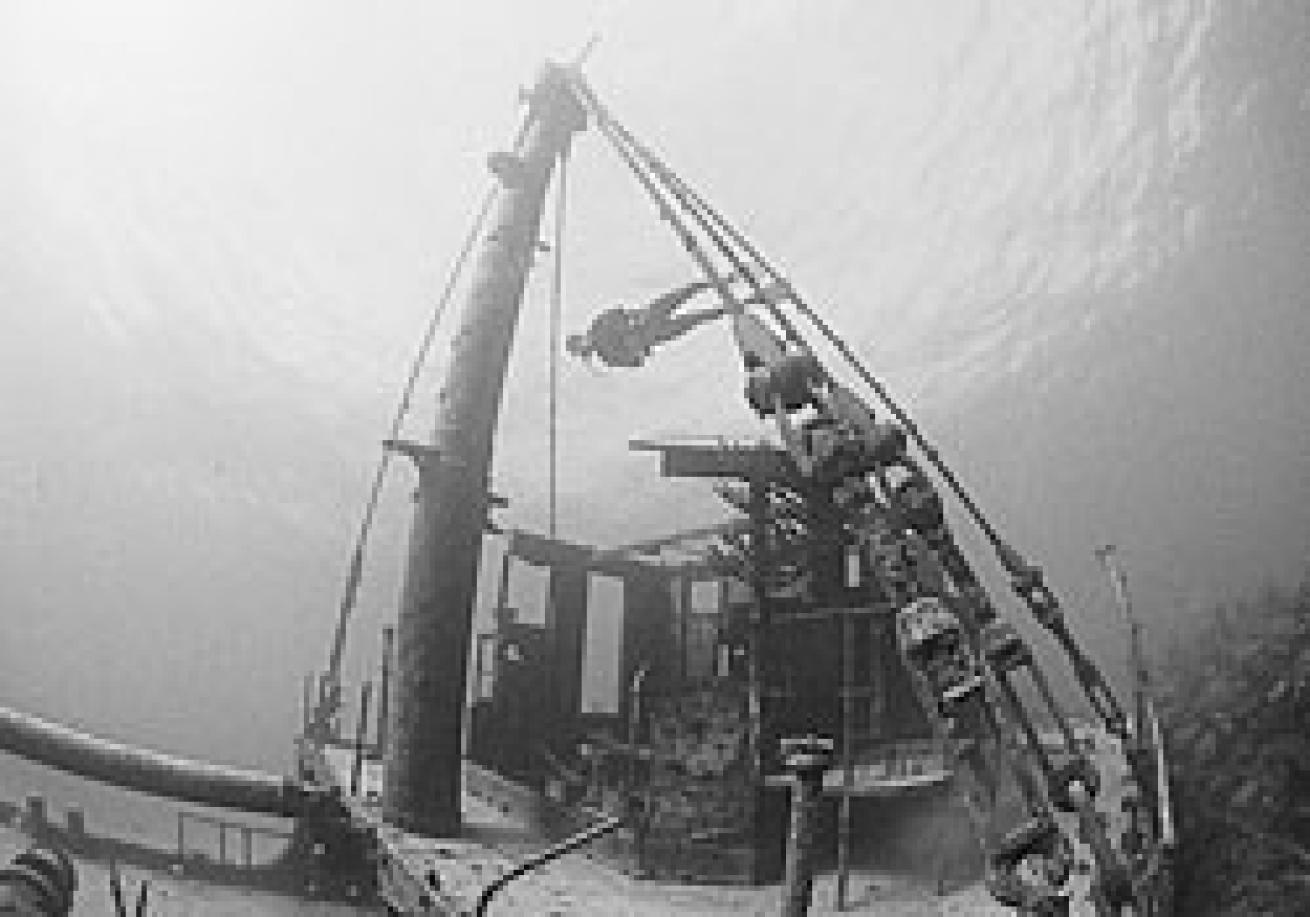
You Get What You Pay For
What else is there to Bermuda? There are more golf courses here per square mile than any other place on the planet, a rich history and a unique culture. The groomed resorts, the pink sand beaches, the quaint pastel cottages and the gents decked out in power ties, shorts, dark socks and dress shoes — they're all the daily reality of Bermuda, not just an image drummed up by the tourist board. This is, without doubt, the safest, cleanest and most efficient dive destination anywhere.
But it ain't cheap. Only in the winter off-season (November to May) do hotel rates drop. Food, transportation — everything is expensive because everything is imported. But the service and accommodations are uniformly first-rate. So if it's time to treat yourself to a top-flight vacation, in every respect, the extra money is well-spent. There are a handful of ways to save (see: "Five Ways to Economize," below), but Bermuda is best enjoyed when you can splurge a little.
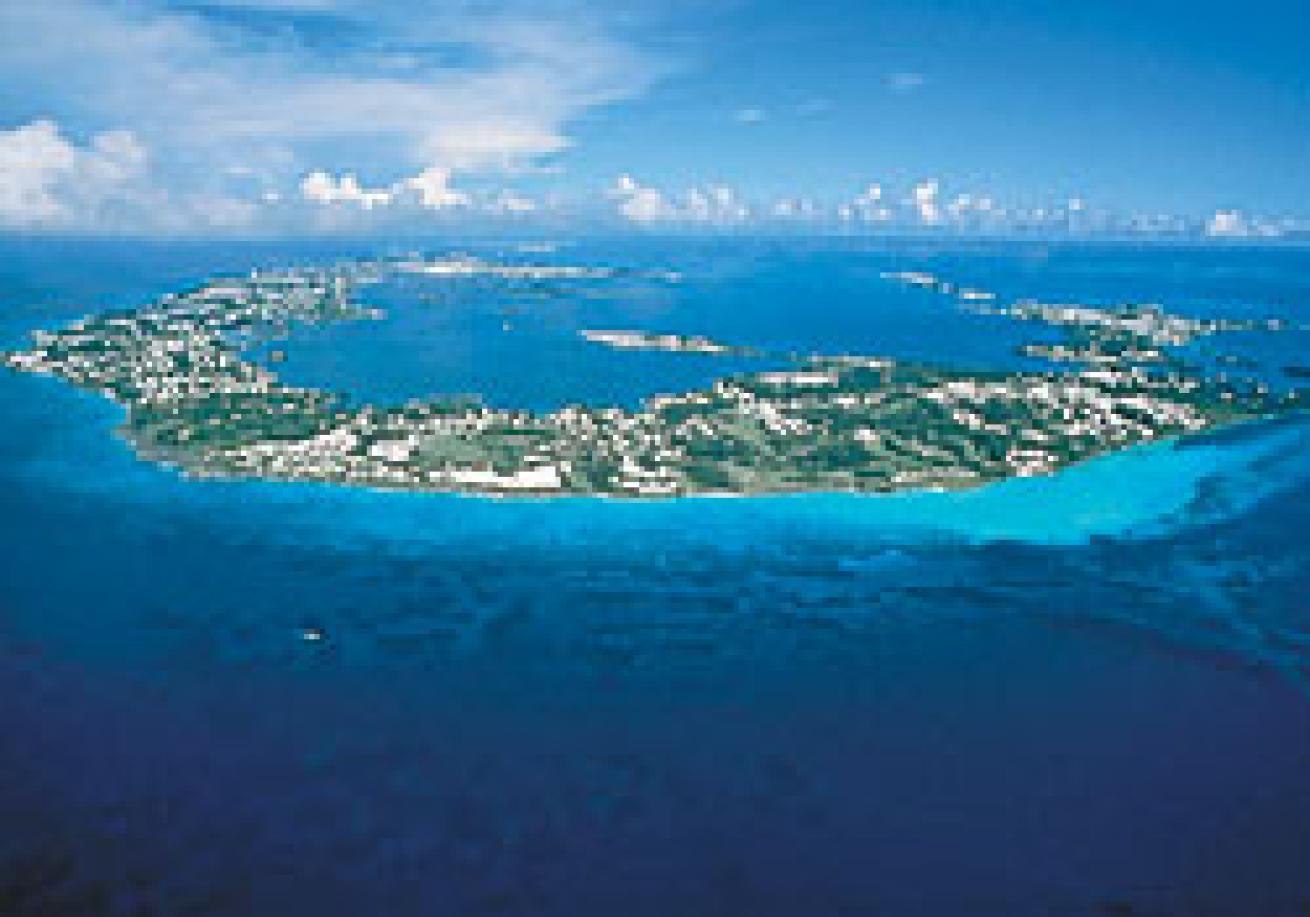
The Dive Report
There are three types of dives on Bermuda: historic wrecks, artificial wrecks and reefs.
Historic Wrecks These are wrecks the way archaeologists and treasure hunters see them — pieces of the past that simultaneously exist in the present. These ships came to violent ends in tragic circumstances, their hulls ripped by an unyielding reef. What wasn't destroyed, salvaged or consumed by the sea has been buried in the sand or swallowed by the reef.
If you expect proud hulls upright and intact, you'll be disappointed. Without an understanding of the history of these wrecks, it can be hard to distinguish them from the reef. But study the history and pay close attention to the dive briefings, and features of the wrecks will pop out at you.
Artificial Wrecks The upright and intact hulls most divers envision when they hear the word "wrecks" are here too. A handful of modern steel hulls have been intentionally sunk for divers and offer plenty of great photo opportunities and safe penetration.
Reef Dives The reef around Bermuda is an amazing thing. It sits on the very northern edge of the zone where corals can survive. Heavy on the sturdy brain and star varieties, what the reef lacks in coral diversity (compared to Caribbean reefs) it makes up with pure vigor. There is no bleaching here and the coral heads grow large and proud, forming archways, tunnels and canyons. They rise up from the sand to scratch the water's surface even miles from dry land — which is why so many ships have been wrecked here. These reefs also boast the usual collection of reef fish suspects, everything from small blennies to big parrotfish.
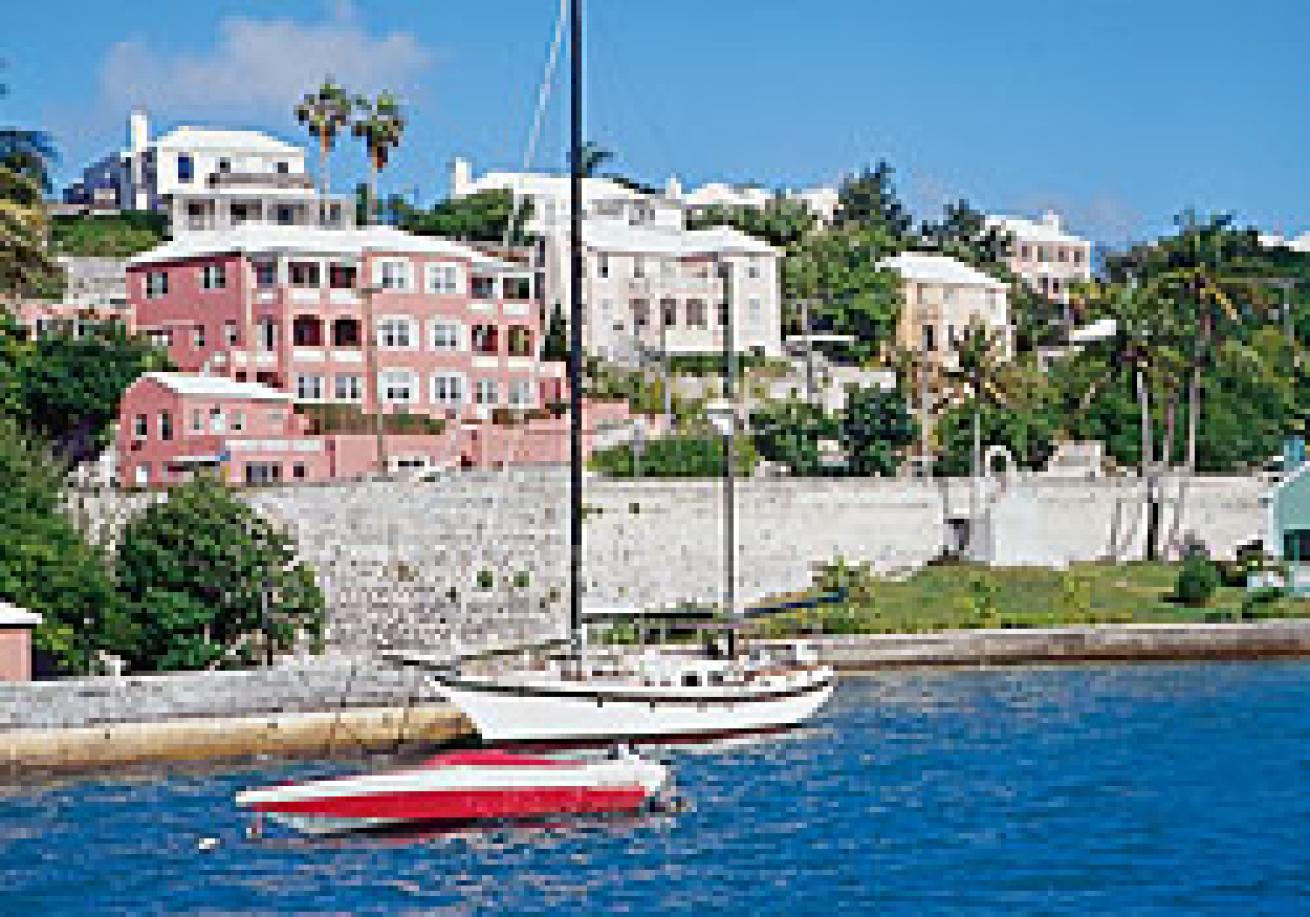
Dive Conditions
Average Depth 40 to 50 feet.
Average Water Conditions Calm. Dive operators have learned to respect the hull-ripping power of the reefs from the mistakes of thousands of captains before them. If the seas are tricky, the dive is cancelled. The result: a virtual guarantee of calm conditions on every dive. In short: a great destination for both beginners and advanced divers.
Visibility Depending on season, site location and weather conditions, you can count on viz from 80 to 200-plus feet.
Water Temperatures Well, there had to be a catch somewhere. Although Bermuda waters warm to the low 80s in summer, they can drop to a chilly 65 in late fall and winter. And the seasonal change can happen seemingly overnight. No problem, if you pack the right exposure protection. Dive operators recommend a full 3mm for summer; and a full 5mm to 7mm for late fall, winter and early spring. Gloves, a hood and even a vest are a good idea for cold-natured divers. And don't forget to bring warm, dry clothes for between and after dives.
Eight Classic Bermuda Dives
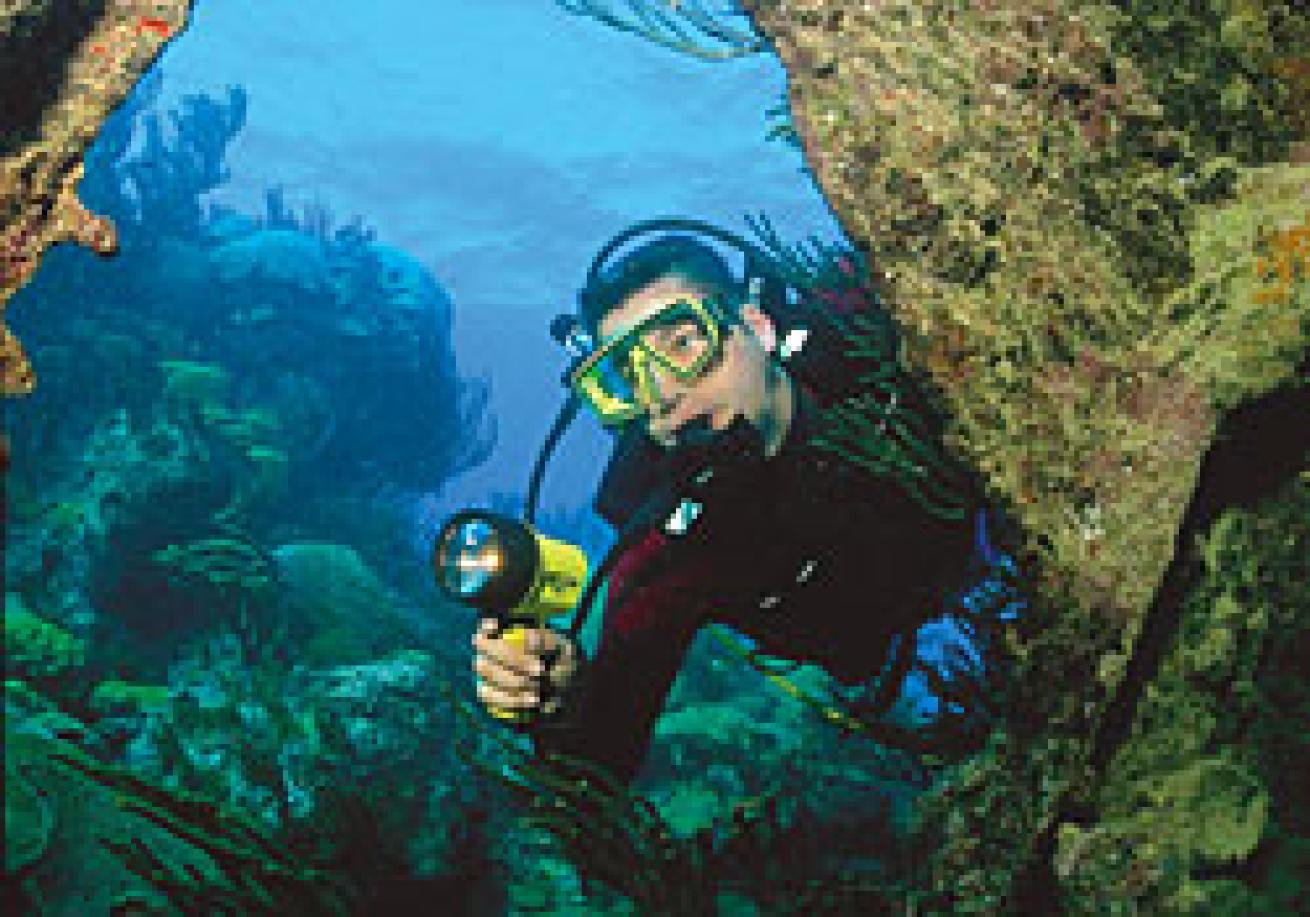
Marie Celeste
Confederate paddle-wheel steamer, sank 1864
This twin-paddle-wheel steamer was fast, sleek and ideal for smuggling. A Civil War blockade runner in the service of the Confederacy, the Celeste was cruising at full speed along the south shore with a load of corned beef and rifles when she hit the reef and sank in only 11 minutes. Her boilers and skeletal remains of the paddle wheels now lie in the sand outside the breakers.
Montana
English paddle-wheel steamer, sank 1863
One of many blockade runners used by Confederates and based in Bermuda during the American Civil War. Both paddle wheels and both boilers make good photo ops, as does the school of 500 barracudas that hangs out here in spring and autumn.
Constellation
Four-masted schooner, sank 1943
Along with Montana, Constellation was featured in Peter Benchley's book and movie The Deep. Her cargo of cement bags bound for Venezuela form a hardened mountain for marine life and thousands of glass morphine ampules still litter the seafloor.
Hermes
165-foot freighter, sank 1984
Intentionally sunk upright in 80 feet of water, Bermuda dive operators have opened her up, making this ship safe for penetration by all levels of divers, including her cargo hold, engine room, crew quarters and more.
Minnie Breslauer
300-foot English steamer, sank 1873
Her maiden voyage from Portugal to New York ended on Bermuda's southwest reefs. The stern section is still largely intact at 65 feet, with massive boiler and propeller inside. Look for grouper, which sometimes hang out here.
King
55-foot American tug, sank 1984
Mel Fisher left behind his salvage boat, which was intentionally sunk intact in 60 feet of water. Open for penetration and often dived in conjunction with nearby Marie Celeste.
Southwest Breaker Neither coral nor rock, this formation breaking the water's surface is made of fossilized prehistoric worms. Below are two other formations, all connected by twisting tunnels stuffed with millions of silversides in the summer.
L'Herminie
French frigate, sank 1838
She was 300 feet long, bristled with 60 cannons and was crewed by 495 sailors. In her day, L'Herminie was a potent symbol of naval power, but her wooden hull was no match for the reef on the west-northwest shore. Fifty-nine of the cannons are still under 30 feet of water, frozen in place by encrusting reef and scattered across a wide area. Great photo ops: the crossed cannons — two massive guns frozen in a makeshift X — and her 18-foot-tall anchor.
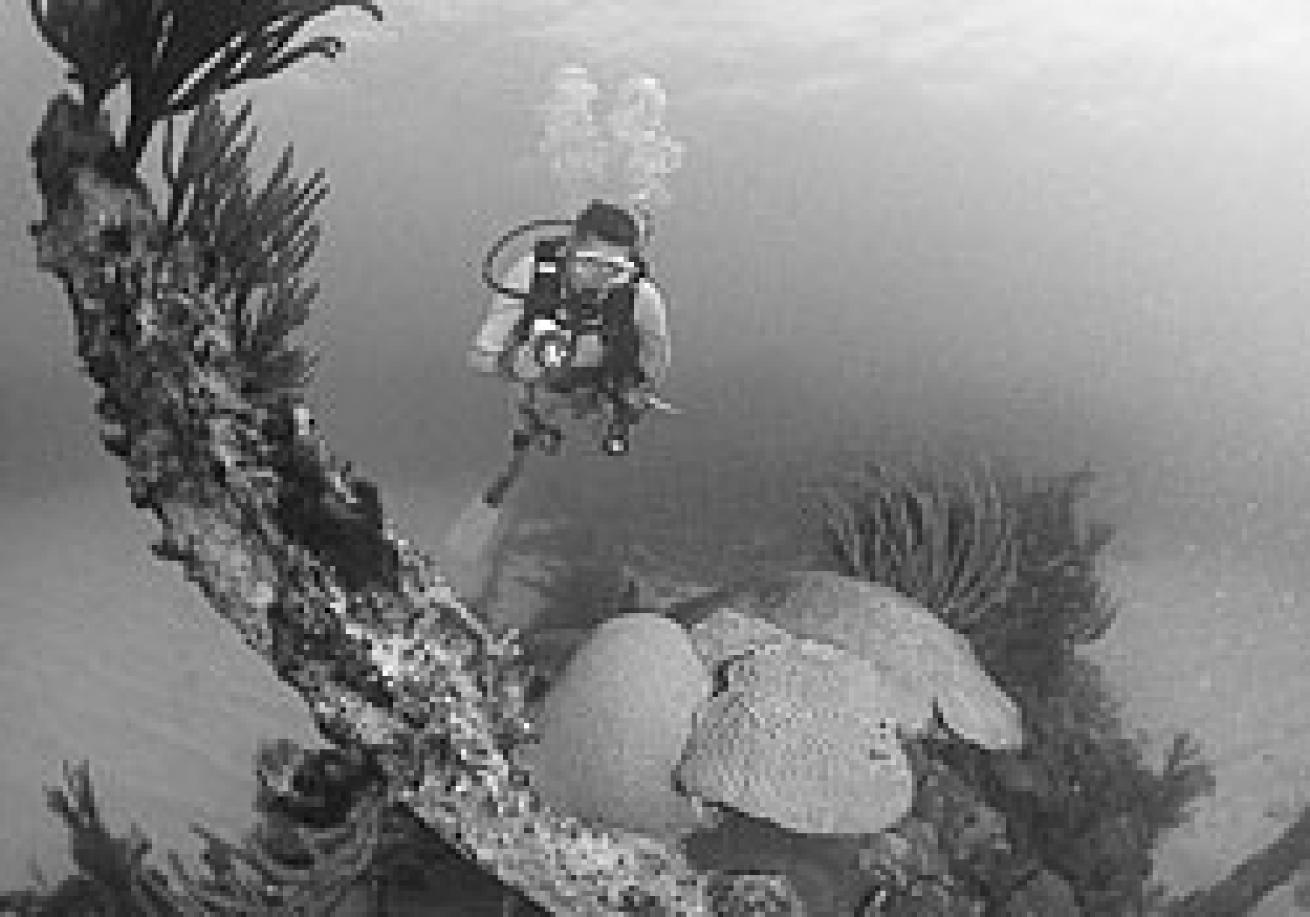
Bermuda History and Culture
Bermuda's fascination with shipwrecks is a natural part of the island's heritage. The island was first settled by shipwreck survivors in 1609. The Sea Venture, under the command of Sir George Somers, was headed to the Jamestown colony in Virginia when she hit the reef. Survivors straggled to dry land and found a pretty nice island on which to be shipwrecked. Somers ordered a replacement ship built from Bermuda cedar and sailed for England, leaving a detachment behind to secure the island, which would soon become an important way point in trans-Atlantic shipping.
Though proudly allegiant to the Crown, Bermuda has always had close business ties to the United States — some legal, some not. The culture that has evolved is considered British by Americans, and Americanized by the Brits. You be the judge, though being Yanks ourselves, we tend to believe the former. Examples: Cricket is the local sporting passion, the bars are all pubs, and afternoon tea is still observed in polite corners of society. But there are unique island traits, such as the Gombey dancers and the traditional Sunday codfish breakfasts.
Dress Code
"Yes, I have your table prepared," the tuxedoed maitre d' said crisply. He scanned our group discreetly, his eyes stopping on me. "First, a jacket for the gentleman."
The loaner sport coat I was offered didn't come close to fitting and wasn't a match with my khaki pants and long-sleeved sport shirt. No matter. As long as I draped the coat over my arm en route to the table, propriety was satisfied and dinner was served.
Yes. Fastidious Bermuda has a dress code and not just in posh restaurants. To spare you potential embarrassment, we offer these excerpts from the clothing section of the Bermuda Travel Tips brochure.
As a rule of thumb, dress conservatively. In public (including public area of hotels) beach wear must be covered. Bare feet are not acceptable in public.
It is an offense to ride cycles or appear in public without a shirt or just wearing a bathing suit top.
Casual sportswear is acceptable in restaurants at lunch, but many restaurants and nightclubs in and out of hotels require gentlemen to wear a jacket and tie in the evenings.
Five Ways to Economize
1) Get the Package. For one price, dive/hotel packages can give you a break on the hotel costs, a full slate of diving and help limit out-of-pocket expenses like airport transfers that can really add up here. All packages are not created equal, however, so shop around. The other advantage to packages is convenience — all the details are taken care of. You sit back and enjoy the vacation, instead of worrying about how to save a buck on every transaction. Off-season package rates here are about what other destinations charge for high season, but there's an added advantage — no crowds.
2) Find Alternative Accommodations. Resort hotels offer amenities and service as premium as their prices, but if you're willing to forgo those luxuries to save a few bucks, there are a host of rental villas and other accommodations that can save you money, particularly if you're travelling with a group. Shop the options at www.bermudatourism.com or ask your dive shop for advice. In most cases, they'll arrange to pick you up by boat or car for dive trips — gratis.
3) Curb Your Appetite. Dining out on Bermuda can be another budget-breaker, and a tempting one given the wide selection of great restaurants and truly "fine dining" experiences. Even groceries are expensive, but cooking for yourself during the day may save you enough to splurge on a grand dinner at night. Just remember to pack appropriate clothing for the establishment (see: "Dress Code," above).
4) Take the Bus. The bus system on Bermuda is an efficient and convenient way to get around. You can't rent a car on Bermuda, due to tight government restrictions on the number of cars allowed on the island. Cabs are clean, friendly and readily available, but figure a minimum fare around $10 for even short hops. Scooters are available for rent, but can also run up a tab. The bus system goes everywhere on the island. The only catch: you must have the exact fare in coins. Your hotel can help you get the right coinage and help you sort out schedules.
5) Take a Pass. The Bermuda Heritage Pass allows you unlimited access to eight of Bermuda's leading museums and attractions — including the Bermuda Underwater Exploration Institute, the Maritime Museum and the excellent Aquarium, Natural History Museum and Zoo. Cost: $35 for adults, $17.50 for kids under 14. Passes are good for four days and available at participating hotels and Visitors' Service Bureaus.
Something Extra: Shipwreck Certificate Program
All of Bermuda's dive operators offer this added bonus for wreck divers and history buffs. Just dive any of the 18 designated wrecks (see list) and you'll be awarded a handsome, suitable-for-framing parchment that records the date of your dive and includes the history of the wreck. For more details, call any dive operator.
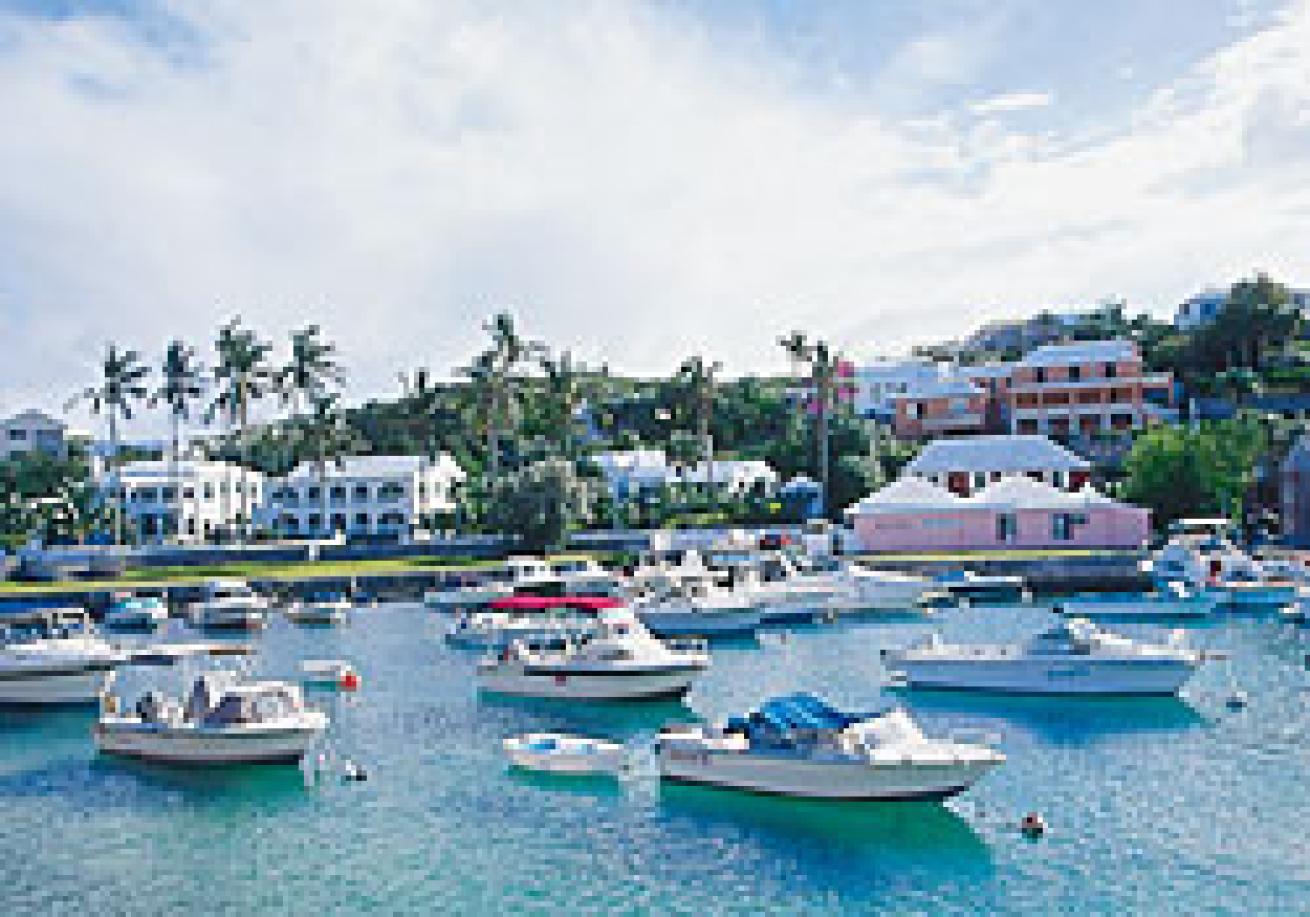
Dive Operators
Bluewater Divers, (441) 234-1034, fax: (441) 234-3561. Web: divebermuda.com. E-mail: [email protected].
Nautilus Diving, (441) 238-2332 or 295-9485, fax: (441) 234-5180. Web: www.bermuda.bm/nautilus. E-mail: [email protected].
Scuba Look, (441) 292-1717, fax: (441) 295-2421. Web: www.diveguideint.com/scubaluk.
Southside Scuba, (441) 238-1833, fax: (441) 236-0394. Web: www.bermudawatersports.com. E-mail: [email protected].
Fantasea Diving, (888) DO-A-DIVE, (441) 236-6339, fax: (441) 236-8926. Web: www.fantasea.bm. E-mail: [email protected].
Dive In
Location: 650 miles east of Cape Hatteras, N.C., placing the island well into the Atlantic Ocean, not the Caribbean Sea.
Geography: Bermuda is not one island but a collection of more than 150 islands and rocks that form a lagoon surrounded by 200 square miles of fringing reef. The islands and surrounding reef are the remnants of a long-extinct volcano that rises some 17,000 feet from the Atlantic seafloor.
Electricity: 110 volts, 60 cycles, the same standard as in the United States.
Telephone: Bermuda is in the 441 area code.
Health: Food and water are safe.
Language: English.
Documents: Passport and return ticket.
Money: The Bermuda dollar is at par with the U.S. dollar and the two are used interchangeably. Credit cards and U.S. traveler's checks are widely accepted. ATMs, dispensing Bermudian currency, are available.
Weather: Bring a sweater or jacket for nights, particularly in fall and winter. The islands are considered semi-tropical, with daytime winter temperatures in the 70s. Summer temps are in the 80s.
For More Information: Call 1-800-BERMUDA or (416) 923-9600 in Canada. Visit www.bermudatourism.com.






